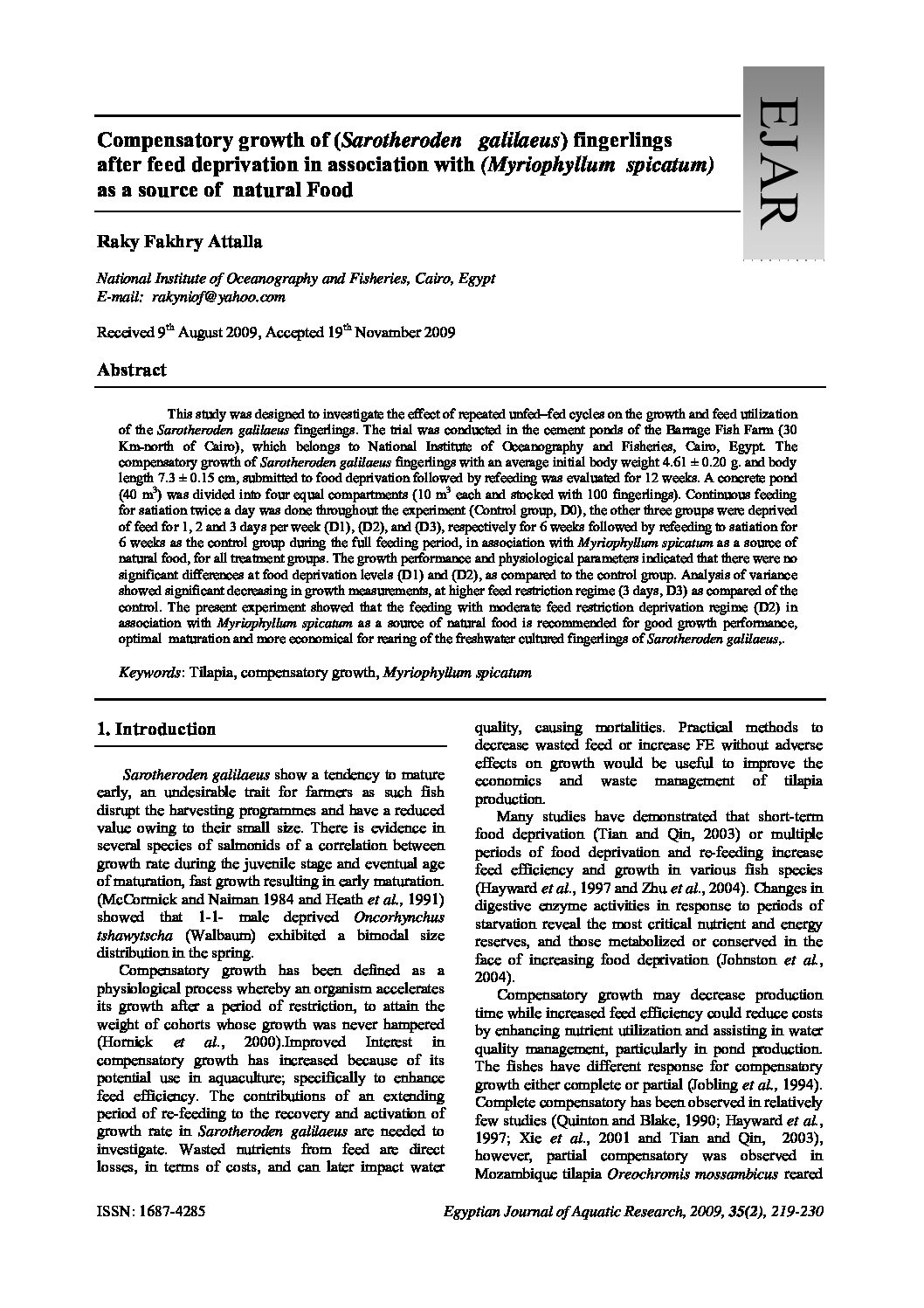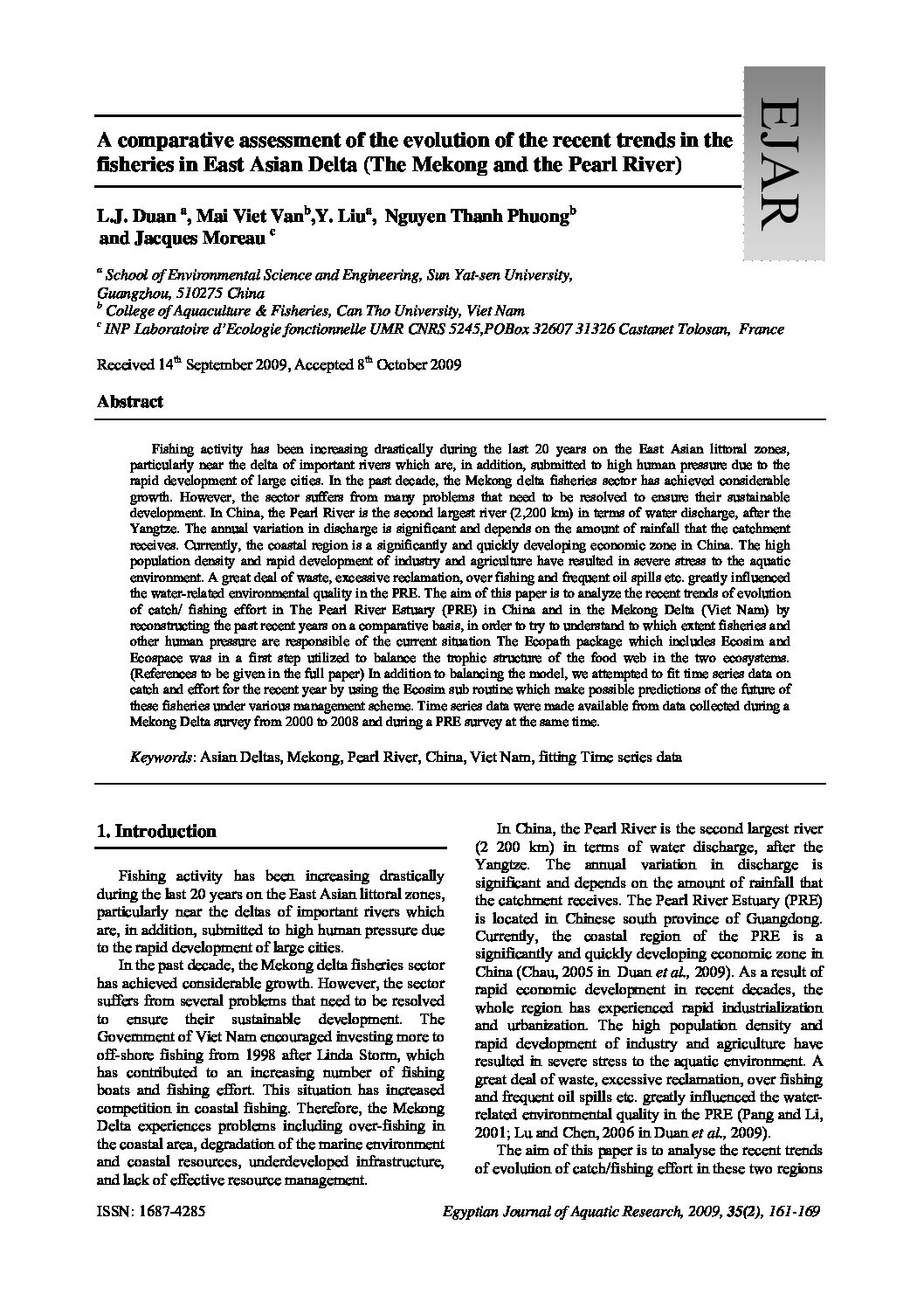Categories
vol-35Compensatory growth of (Sarotheroden galilaeus) fingerlings
after feed deprivation in association with (Myriophyllum spicatum)
as a source of natural Food
Raky Fakhry Attalla
National Institute of Oceanography and Fisheries, Cairo, Egypt
E-mail: [email protected]
Received 9th August 2009, Accepted 19th Novamber 2009
Abstract
This study was designed to investigate the effect of repeated unfed–fed cycles on the growth and feed utilization
of the Sarotheroden galilaeus fingerlings. The trial was conducted in the cement ponds of the Barrage Fish Farm (30
Km-north of Cairo), which belongs to National Institute of Oceanography and Fisheries, Cairo, Egypt. The
compensatory growth of Sarotheroden galilaeus fingerlings with an average initial body weight 4.61 ± 0.20 g. and body
length 7.3 ± 0.15 cm, submitted to food deprivation followed by refeeding was evaluated for 12 weeks. A concrete pond
(40 m3
) was divided into four equal compartments (10 m3
each and stocked with 100 fingerlings). Continuous feeding
for satiation twice a day was done throughout the experiment (Control group, D0), the other three groups were deprived
of feed for 1, 2 and 3 days per week (D1), (D2), and (D3), respectively for 6 weeks followed by refeeding to satiation for
6 weeks as the control group during the full feeding period, in association with Myriophyllum spicatum as a source of
natural food, for all treatment groups. The growth performance and physiological parameters indicated that there were no
significant differences at food deprivation levels (D1) and (D2), as compared to the control group. Analysis of variance
showed significant decreasing in growth measurements, at higher feed restriction regime (3 days, D3) as compared of the
control. The present experiment showed that the feeding with moderate feed restriction deprivation regime (D2) in
association with Myriophyllum spicatum as a source of natural food is recommended for good growth performance,
optimal maturation and more economical for rearing of the freshwater cultured fingerlings of Sarotheroden galilaeus,.
Keywords: Tilapia, compensatory growth, Myriophyllum spicatum







